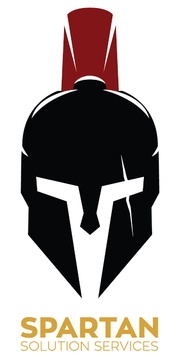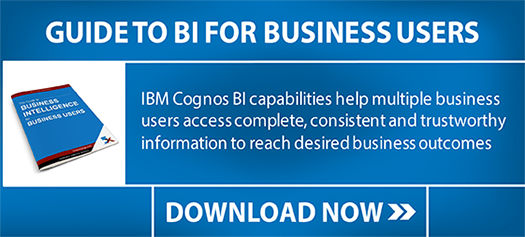The nature of business is becoming increasingly complex. New business intelligence (BI) solutions are happening daily. And, these solutions are expanding the new ways of increasing efficiency and growing a business.
Of course, these new BI solutions don't come without challenges. Businesses need to ensure integration throughout various business units. Given that much of the change is driven by technology, that means collaboration between IT and business leaders is essential to produce actionable business intelligence for a solid BI strategy that ensures survival and success.
Digital disruption is coming, regardless of your industry. IT departments are still adjusting to the change it brings and the expansion of their role in a larger organizational context. There's no silver bullet that works for every IT team. But when it comes to working together - whether it's building a new reporting or integrating data into a new system - there are principles that will help teams maintain a positive experience.
To show how we integrate IT with business leaders at 5x Technology, here are three things we've learned in our collaborations with business leaders.
3 Lessons We Learned Working with IT & Business Leaders
Lesson 1: IT Provides Data & Streamlined Workflows
Generally speaking, IT is responsible for safeguarding against errors and ensuring technological safety. At the same time, their emphasis should be more than just tactical in a functioning organization designed for technological innovation.
To start, IT is responsible for solutions that can provide necessary data for decision support. These platforms, implemented correctly, can both save time and effort by streamlining workflow within the organization. The result is increased efficiency, along with a more data-based decision-making system that stretches across departments.
IT reports, in fact, can allow business leaders across departments to see the increasing workload and pressures burdening their team members. Access to data and streamlined workflow hold equal sway for these leaders, who can enhance their planning efforts as a result of IT collaboration.
Modern business operations need to be integrated. Empathy with various departments is becoming increasingly vital, which includes close collaboration with traditionally isolated units like IT. Through collaboration, your organization can move its IT functionality from tactical to strategic, increasing its role in driving the business forward.
Lesson 2: It Pays to Have IT Train Staff
Today, it's becoming increasingly rare to see organizations not depending on IT functions for their daily workload. As a result, team leaders should work directly with IT team members on defining system requirements for IT investments, and ensure proper business intelligence training to improve the bottom line.
The data gathered and provided by IT is vital not just internally, but for different stakeholders throughout the organization. That means collaboration, encouraged and enacted from both sides, can make a significant impact on business efficiency and success.
Leaders are more likely to see the value in going beyond collaboration on their level in the organizational hierarchy if they see its benefits. They can consult directly with staff to understand actual workflow, which provides an opportunity for IT team members to shadow staff. This, in turn, results in an opportunity to understand how the IT systems they select and implement are used in a real-life environment throughout the organization.
That intelligence will be vital when setting up not just the systems themselves, but reporting from these systems. IT can then also offer training where needed, both on the systems responsible for daily workflow and the reporting that provides actionable intelligence.
In today's business environment, 40% of IT spending comes from business units outside of IT. Without integration, that spend may be duplicate, or not actively used to improve existing processes. Only active collaboration can ensure continuous technological integration, along with a more strategic emphasis on the type of systems and methods that help to drive your business forward.
Lesson 3: Appreciate the Power of Data
Organizations that do not encourage collaboration between IT and business leaders on a larger scale tend to support the status quo. Communication is essential. Here, IT managers tend to take the lead on defining technological requirements that ensure security, ensuring that new systems fit within legacy IT operation.
Encouraging and maintaining status quo, of course, is a dangerous precedent in today's environment of digital disruption. Digital transformation and innovation are crucial to maintain a competitive advantage, decrease inefficiencies, and ensure long-term survival in a competitive marketplace.
Without collaboration between IT and business leaders, that innovation is difficult to achieve. Leaders tend to be less likely to see the role that IT leaders can play in identifying new system potential and capabilities. They also tend to view decisions about IT solutions as being driven by necessity due to regulatory requirements, rather than potential for positive change.
Through collaboration, IT leaders can help executives recognize current gaps, and propose new solutions that can close them. They can leverage the power of data, encouraging a KPI-driven approach that drives the business forward rather than treading in place.
It's More Than Just IT
Innovations and competitive advancements have made collaboration between IT and business leaders vital. Without it, technology becomes a budget item that is little more than tactical. Of course, only a strategic emphasis on IT and its larger role in your organization's processes can ensure continuing success and advancement.
Through effective collaboration, IT leaders and team members can provide data that is crucial for making strategic decisions. Workflows are more easily streamlined if technology experts understand their real-life applications and implications. Regular training can provide the organizational knowledge staff needs to maximize the capabilities of new systems.
Ultimately, all of it comes down to a system in which IT and business leaders work together not just nominally, but proactively. Once IT leadership is involved in larger management decisions, it can be a driving force behind driving the company forward. Maintaining the status quo turns into a culture of technological innovation, building an internal and external competitive advantage that is vital for continued survival and success.




